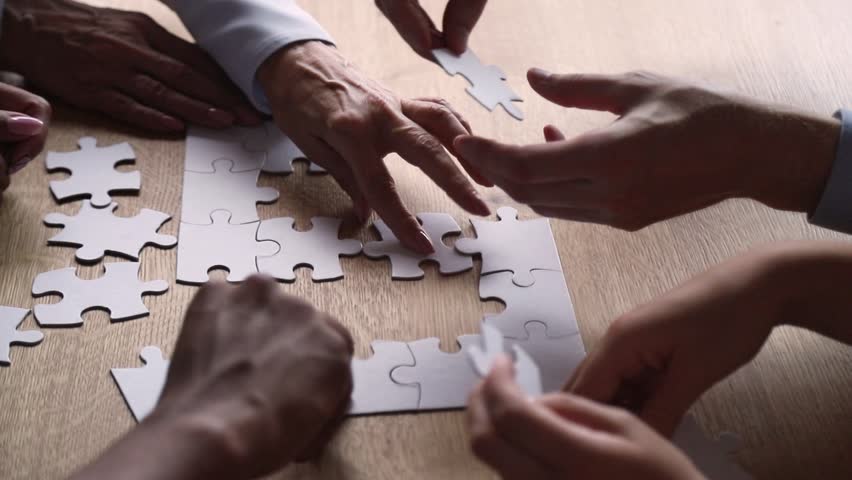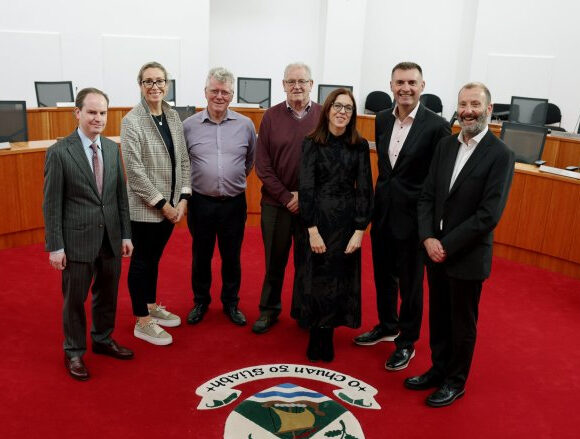Rates of change in the business world have never been so high: organisations move through their business life cycles twice as fast today as they did in the early 1990s. Public sector bodies therefore need to anticipate change. There is strong evidence that preemptive self disruption is much more likely to be successful than involuntary disruption. But many forces mitigate against this, especially the conservatism and complacency that often follow success. Too often, when we need to be responsive to the environment, we end up following the same well-trodden paths in our processes and thinking.
We need the equivalent of a “fire starter”—something to kick-start our minds, to push us out of habitual process-driven ruts. We propose that well-designed games can serve this purpose, unlocking imagination and intelligence to take us to the starting line for developing great strategy.
Counterfactual Thinking
The idea of playing games in business may sound frivolous, but they can be a powerful tool to unlock a much-needed capacity: counterfactual thinking. Most of the time in business, we focus on the factual world — the dynamics that exist around us and the problems they raise. But it i sometimes vital to get away from what happens to be the case now (the factual) to consider imaginative possibilities (the counterfactual): the realm of what is not currently the case but could be.
Without counterfactual thinking, we become mentally and practically stuck. We focus only on exploiting the prevailing offering and business model instead of asking broader strategic questions: What other products and services could we develop? How could our organisation transform itself? What scenarios might throw us off course or offer new opportunities? We need to provoke counterfactual thinking in order to explore, learn, and change.
Former IBM CEO Lou Gerstner pointed out two major barriers to substantial change in large organisations: the failure to create a sense of urgency and the failure to address entrenched interests. Games help overcome both these barriers. First, because we are tuned to deal with what is most immediate to us, there is usually no urgency to contemplate new possibilities. But by putting daily demands on hold, games create a context where thinking counterfactually becomes the priority. As well as the permission they give, the competition and excitement of games drive a sense of urgency.
Second, it often seems pointless to imagine possibilities for change if you don’t believe that they could ever happen, because of entrenched interests. Games address this barrier by creating an interaction in which entrenched interests are put aside, reducing the risk of suggesting new 56 Council Journal ideas. It is hard in a regular business meeting to ask hypothetically about transformation if the division head is sitting right there. In a game, you can playfully raise possibilities in a context that includes key stakeholders, but where everyone knows the thinking is exploratory.
Strategy Palette
It is a common pitfall for organisations to think of strategy too narrowly; the default is usually the classical “analyse, plan, and execute” approach. To explore a broader range of approaches, we created the Strategy Palette Game (available on iOS and Android). In this game, you operate lemonade stand in various competitive environments and must adapt your approach to strategy and execution accordingly. The game can be used as a starting point to discuss how different parts of your organisation face different strategic environments, and understand why this in turn call for a range of approaches to strategy and implementation.
This is true not only for companies but also for business units within a company. The game shows that a single standard process for strategy is no longer viable, hence inviting and legitimising a broader set of approaches beyond planning.
Invert Your Company
To play this game, first think through your current organisation model, identifying and articulating underlying assumptions. For example, a car manufacturer’s business model might be based on the assumption that people want to buy cars, that cars will be manufactured in factories, that the main offering of the company is cars, and so on. The next step is to invert these assumptions, either by reversing them or radically changing them in some way. Then imagine an make the best case for doing business on the basis of these inverted assumptions. For example, inverted assumptions could include: that people only rent cars (that the offering is a service, not a product) or that cars or parts are made by 3D printing in a decentralised fashion. The important thing is not to be right but to stretch your thinking to generate ideas that may be worthy of further consideration.
An apparently ridiculous idea might indeed be unviable — or it may be merely unfamiliar and uncomfortable. It is not possible to discover valuable but uncomfortable ideas without first thinking counterfactually.
Fix Your Customer’s Life
Amazon aims to “solve shopping” for its customers. That is, it has identified an area of its customers’ lives and aims to solve any and all problems in this area, even if they have never been addressed or solved by any business before. In so doing, Amazon is framing needs that current customers may not even realize they have. For this game, ask yourself what area of your customers’ lives your organisation addresses, in terms of Public Bodies it can be a long list. It is important to picture this holistically from the consumer’s perspective, not from the narrower perspective of supplying today’s products and services. For example, a bank is fundamentally concerned with solving money-related needs. An Amazon-like real-estate company would be aiming to “solve accommodation.” This might include offering products and services we currently classify under interior design, construction, financing, hospitality, and travel — as well as services yet to be invented. These might include, for example, new psychological services to address questions such as when is the right time to move house, why you want to move, and what you are truly looking for from a home as a function of your life stage and outlook. Step back from current operations and products and think about the area of human life that your company touches. Think about the problems no one else has solved for yet. This is the territory you could move into to build a winning strategy for the future.
Frictions
Imagine a business where customers experience no friction, a business in which there’s perfect choice, perfect information, no search costs, perfect customer understanding of your offering, perfect availability, no mistakes, no quality issues or rework, and no delays. Then consider where your organisation and your partners depart from this ideal scenario. Quantify the cost involved and ask yourself: What are the sources of friction that are largest and easiest to reduce? Imagine a business model that would create this improved customer experience.
Of course no organisation is frictionless. But disruptors, to have a viable and compelling proposition, will implicitly be addressing a source of friction that incumbents take for granted. It can be hard to identify such frictions, since the current business model may have decades of precedent. There may be no customers complaining about, nor competitors yet addressing, these frictions. Here are the sorts of questions you’d ask to uncover these frictions in an insurance company: Is it inevitable that there are many risks that are hard to insure, that insurance contracts are hard to understand, that it’s hard for individuals to comprehend their total risk profile, that it’s painful to adjust one’s insurance portfolio, that
intermediaries take substantial margins for providing navigation and advice, and that claims are resolved only after substantial delay? What questions would you need to ask about your business to reveal the frictions you take for granted?
The frictions game can help you envision sources of disruption preemptively, and surface ideas on how to better serve customers with more competitive and economically attractive business models.
Heroic Press Conference
Your organisation’s new business venture has become immensely successful. Imagine the press conference explaining this success. What would it be like? What would you say about your company? Then consider what it took for the company to get there. The heroic press conference game can align stakeholders on a vision of success and help elaborate the concrete steps required to reach it. There is a stage when a new innovation is known but may not yet be seriously contemplated as future pillar of the business. Scaling an innovation requires not only increasing the resources allocated to it and removing the bottlenecks to expanding operational scale, but also cultivating belief and adoption by employees, customers, and investors. FEATURE Free Your Mind to strategise Council Journal 57 Working backwards from the counterfactual of assumed success can help create the narrative that brings this about.
Preemptive Postmortem
Come up with a couple of plausible catastrophic events (such as natural disasters or competitive disruptions) and think about how your current or contemplated strategy would be impacted. The effectiveness of a new strategy can be hard to assess. Confronting it with dramatic events is a great way to further push the thinking, making it more robust. In today’s business world, the longevity of a strategy is as important as its immediate attractiveness.
The game lets participants identify risks to take into account when further developing the strategy, identify the conditions under which it could fail, and develop the actions required to mitigate these.
Combining Games
The games described above can be leveraged in various combinations depending on your company’s situation and needs: you can choose to use one, several, or all of the games as part of your strategy process. You can use the games as a prelude to a formal strategy process or even as an alternative to a more traditional process. For example, here are several combinations of games that address common organisational needs:
• Rethink the company’s strategic direction. Start with Strategy Palette, followed by Invert Your Company, Activist Attack, Heroic Press Conference, and Preemptive Postmortem.
• Identify and react to potential disruptive threats. Start with Strategy Palette, followed by Maverick Battle, Frictions, Destroy Your Business, and Activist Attack.
• Enhance customer focus. Start with Strategy Palette, followed by Bad Customer, Frictions, and Fix Your Customer’s Life.
• Foster alignment around and elaboration of a new strategy. Start with Strategy Palette, followed by Heroic Press Conference.
How to Run Strategy Games Effectively
Running games successfully requires the right environment, the right mindset, and the right participants. Playfulness happens when people feel comfortable enough to think freely, allowing established ideas and interests to be challenged. The “playground” needs to be a judgment-free area, favoring suggestion and elaboration over argumentation. This can be helped by escaping the traditional meeting room, which can signal business as usual. Yet changing the space is only effective when it is accompanied by a change in mindset. This comes from the top: managers should be careful to suspend judgment and encourage others to do the same. “The best way to have a good idea is to have a lot of ideas,” says Nobel Prize winner Linus Pauling. Judgment can occur after the game, once the development of a strategy begins. Counterfactual thinking works by elaboration and thus requires patience and a constructive approach. The starting points are often vague or odd — before the picture gets filled in.
Success with games, finally, relies on selecting the right players. Participants should include those with the power to act on the ideas or influence those who can. It should ideally also involve a diversity of viewpoints: different positions within the company, business units, and cognitive styles.
Yet the greater diversity in positions (such as the CEO and an associate in the same room), the more attention is required to mindset in order to ensure that people feel able to contribute.













